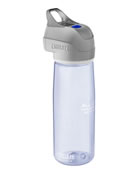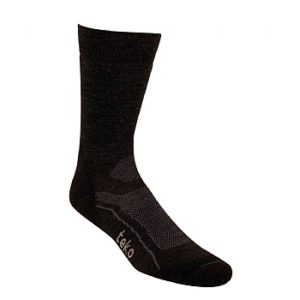Granted, we ran a version of this blog in April, but with the appearance of The Heat Dome and the possibility of temperatures topping 100 in the region this weekend, it seemed appropriate to repeat the high points. Starting with …
Don’t hesitate to adjust your plans based on the forecast. For instance, GetBackpacking! was scheduled to do the 35-mile Virginia Triple Crown loop this weekend. The four-day trip takes a high route, largely sticking to ridges.
Ridges tend to be devoid of water, which is a problem on any backpack trip but especially one with Heat Dome heat. We’ve not had trouble finding water on our three previous VTC hikes, but then we haven’t done a trip where it hasn’t rained the 10 previous days, and no rain is in the forecast. This trip was quickly devolving from sweaty and uncomfortable, to dangerous. So we changed direction. We’re saving the VTC until late October, cooler and colorful late October, and we are instead doing a basecamp trip this weekend at Doughton Park. There’s sufficient water for drinking and, of psychological importance, for lolling about in following a day on the trail (in lighter day packs). Learn more about both trips at the end of this post. Now, on to our Heat Dome Tips.
Minimize the heat
Maybe you can’t ignore the heat. But you can minimize its debilitating effects.
- Clothes. Wear lightweight clothes, preferably clothes that breath. Button-style fishing and hiking shirts typically have ample vents and mesh that do a good job of keeping you cool by letting you vent body heat.
- Pants. If you’re not a fan of shorts, the good news is there are several relatively inexpensive lightweight nylon pants on the market. Some even come with UPF sunblock protection. The protection that long pants offer can be especially welcome in summer. If you’re on an exposed trail, that protection from the sun is great. If you’re on a trail meandering through tight vegetation, long pants are good protection from poison ivy/oak/sumac and other irritating plants, and from ticks; the little pests can still weasel their way onto your skin, but it’s a harder task.
Drink (a k a hydrate)

Water is important whenever you exercise. It’s especially important in the heat, when you’re sweating more than on a cool day. Two key points when it comes to water.
- Remember to take it. At the bare minimum, take a liter of water. Even if you’re doing a 1/2-mile nature trail, take a liter of water. If you’re going longer, say, between 2 and 5 miles, take two liters of water. If you’re going much beyond that, take two liters as well as a filtering device to get more water along the way. Note: The later only works if you are hiking in an area where the water is devoid of chemical pollution.
- Make it so you’ll want to drink it. Do you look forward to a nice, tepid glass of water, water warm enough to brew tea? Likely not. If you use water bottles, the night before a summer hike, fill the bottles 3/4 full and toss them in the freezer. In the morning, top off your ice bottle with water. If you use a hydration pack, fill the bladder with as much ice as possible, then fill with cold water.
How to dress (and undress)
Some key pieces of clothing:

- Wet bandana. Soak a bandana in water, drape it around your neck. When you cross a stream, refresh the bandana. It goes a long way toward keeping your body heat regulated.
- Cotton … refreshes. Normally, you’re discouraged from hiking in a cotton T-shirt. In cold, even cool weather, your T-shirt gets wet from sweat, you stop to take a break, you catch a chill. On a really hot day when you’ll only be on the trail when it’s hot, that sweat-cooled T serves as a form of air conditioning. Do be sure to have a dry T waiting for you when you get back to the trailhead.
- Take extra socks. Even if you’re only hiking 4-5 miles, take an extra pair of socks. Feet get sweaty in the heat (especially if you’re wearing Gore-Tex shoes), the sweat gets absorbed into the socks. Even if you’re wearing wicking wool socks, there’s only so much wet they can wick. When socks become wet, the friction generated by your moving feet will cause blisters. Change socks before you hear an audible squish coming from your shoes.
- Air out your feet on breaks. Even if you’re just taking a 5-minute snack break, sit down and liberate your feet from your shoes and socks. Drape your socks over a branch to dry, let your hot, sweaty feet have a moment to cool.
Maybe you can’t beat a spring or fall day on the trail. But summer does have something to offer.
Give it a chance.
* * *
More tips
This is an abbreviated version of our GetHiking! Guide to Summer Hiking. For the full guide, which includes information on the best times to hike and the best places to hike, go here.
Hike with us!
GetBackpacking! Weekend Escape to Doughton Park, June 21-23, (THIS WEEKEND). Our original Virginia Triple Crown group will hike instead this weekend at Doughton Park, where cooler temperatures and great water opportunities offer a great weekend outdoors.
The essentials:
- Friday: Hike in 1.5 miles to camp, set up camp, with day packs hike 3.3 miles up Basin Creek (and 3.3 miles back).
- Saturday: 16-mile loop including the Cedar Ridge, Bluff Mountain and Grassy Gap Trails.
- Sunday: Break camp, hike out. Optional day hike at nearby Stone Mountain State Park.
Camp is along Basin Creek, not only a good water source but a great place for immersing one’s self post hike. $85. Limited to 5 hikers.
Learn more and sign up here.
GetBackpacking! Virginia’s Triple Crown! This classic 35-mile loop has been rescheduled to the cooler, colorful fall, Oct. 24-27. We now have two openings for this 4-day trip. $225. Learn more and sign up here.
